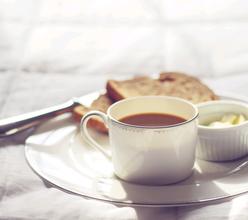Description of Flavor and Flavor of Coffee planting Environment introduction to Regional treatment of Coffee Variety
Description of Flavor and Flavor of Coffee planting Environment introduction to Regional treatment of Coffee Variety
In the case of better management, the coffee began to bear fruit in the third year after planting. The fertilization of adult coffee fruit trees should be mainly nitrogen and potassium fertilizer, and properly combined with phosphorus fertilizer and other elements. The effect of applying potash fertilizer from July to August is the best. Fruit trees are generally fertilized five times a year, once in February to March (flowering stage), April to May (young fruit stage), July to September (fruit filling period), October to November and December to January of the following year. The annual application of organic fertilizer or compost is 1520kg, urea 250g 500g, calcium superphosphate 150g 500g, superphosphate 150g 250g, potassium chloride 150g 200g
The establishment of ① multiplication nursery requires a large number of direct branches and bud slices as materials for cutting and bud grafting. In order to speed up propagation, multiplication nurseries are established. The auxiliary planting density of proliferating seedlings was 1.5 m × 1 m, which was planted according to different clones.
Preparation of ② cutting materials straight branches are used in cutting materials, not a branch, because the new plants grown after cutting with one branch can only grow creeping, not straight coffee trees.
Cuttings should be cut with green uncorked, fully aged leaves, robust straight terminal buds to the lower 2-3 segments, not semi-corked and corked straight branches. The blade of the cuttings is 4 inches wide (about 6 inches 8 cm), and each section of cuttings is 4 inches 6 centimeters long. the cuttings are cut into two pieces, each with a blade, and the cut is oblique and smooth.
The preparation of the ③ slotting machine generally uses a sand bed with a thickness of 40 to 50 centimeters, with coarse sand in the lower part and medium fine sand in the upper part, with a shade of 80 to 90 percent. Wash the sand first when using it, or you can mix it with the coconut bran of 1 stroke 2. Using spray equipment, the rooting rate of cuttings is high, but the cost of equipment purchase is high.
④ cutting method can cut cuttings obliquely or directly, and the depth of cuttings is buried in the leaf nodes. 10 cm to 15 cm in a row, with the leaves not shielding each other as the standard. Fully sprinkle with water after insertion to make the cuttings in close contact with the sand. After cutting, plastic film should be covered on the cutting bed to reduce water evaporation and improve the rooting rate of cuttings. When covering the plastic film, it should be arched with iron wire or bamboo, inserted on the edge of the sand bed, and then covered with the plastic film, and then pressed to maintain the humidity in the bed. If spray equipment is used, there is no need to cover plastic film.
The management of ⑤ cuttings is mainly dripping water and disease prevention, which requires higher air humidity and lower temperature in the cutting bed. Do not drench too much water to avoid cuttings rot or disease. In order to prevent the occurrence of diseases, carbendazim can be sprayed immediately after cutting. If there is a disease later, spray it again for 1 or 2 times.
The transplant cuttings of ⑥ rooting cuttings grow to 3 cm and 4 cm about 60 days after cutting. although it is convenient to move seedlings at this time, it is best to transplant when the cuttings grow the second round of lateral roots (about 90 days after cutting), and the survival rate is high. It should be handled carefully when moving seedlings, because the root system is very fragile and fragile.

Important Notice :
前街咖啡 FrontStreet Coffee has moved to new addredd:
FrontStreet Coffee Address: 315,Donghua East Road,GuangZhou
Tel:020 38364473
- Prev

An introduction to the planting environment in which coffee trees can grow coffee beans for several years.
Coffee tree can grow how coffee beans grow in several years the planting environment introduces that coffee tree is a shrub or small tree of Rubiaceae; leaves opposite, leathery, long ovate; every March, the branches will appear white flowers, petals spirally arranged, the heart jumps around the petals, take a closer look, it is really like a small windmill playing in childhood, emitting bursts of jasmine fragrance; the fruit is oval
- Next

Description of Arabica Coffee Bean characteristics and Flavor introduction of Grinding Calibration method in Manor production area
Arabica coffee bean characteristic flavor description taste manor area grinding scale treatment method Arabica is deeply loved by Chinese people with a short history of coffee contact because of its strong fruit aroma. It was introduced to China by missionaries in the 19th century. It is widely planted in the dry-hot valley of the Jinsha River, which is more than 1000 meters above sea level in Panzhihua, Sichuan and western Yunnan, where the temperature difference between day and night is long.
Related
- Beginners will see the "Coffee pull flower" guide!
- What is the difference between ice blog purified milk and ordinary milk coffee?
- Why is the Philippines the largest producer of crops in Liberia?
- For coffee extraction, should the fine powder be retained?
- How does extracted espresso fill pressed powder? How much strength does it take to press the powder?
- How to make jasmine cold extract coffee? Is the jasmine + latte good?
- Will this little toy really make the coffee taste better? How does Lily Drip affect coffee extraction?
- Will the action of slapping the filter cup also affect coffee extraction?
- What's the difference between powder-to-water ratio and powder-to-liquid ratio?
- What is the Ethiopian local species? What does it have to do with Heirloom native species?

